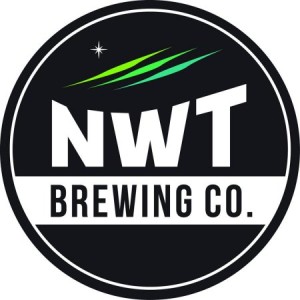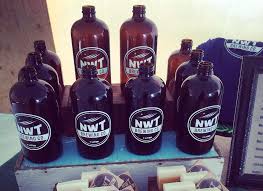 For a number of years I have extolled Yukon Brewing as Canada’s most northern brewery. So much so I made them an honorary Prairie brewery, even though there are no prairies to be found in the northern territory. The Northwest Territories don’t really have any prairie either, but for the same reason I am going to adopt what soon will be Canada’s most northern brewery – overtaking our good friends at Yukon.
For a number of years I have extolled Yukon Brewing as Canada’s most northern brewery. So much so I made them an honorary Prairie brewery, even though there are no prairies to be found in the northern territory. The Northwest Territories don’t really have any prairie either, but for the same reason I am going to adopt what soon will be Canada’s most northern brewery – overtaking our good friends at Yukon.
NWT Brewing hopes its brewpub in Yellowknife will open in late spring. There are still some hurdles to be cleared but the last couple of months have been good for NWT Brewing’s co-founders Fletcher and Miranda Stevens. “The building is under construction. We are getting the brewhouse in April and hopefully if all goes well we will be open in June”, says Fletcher in my conversation with him.
NWT Brewing is a plucky, determined project that hopes to create a Yellowknife anchor. At the moment the city of 10,000 has no real beer spot to speak of. The Stevens’ are building a 3,000 square feet, 120 seat restaurant that will be anchored, at least initially, by a 12 tap bar offering 6 beer made on site along with 6 guest taps. The guest taps will help ease Yellowknife drinkers into the craft beer world.
“Until now this town is Budweiser all the way” says Fletcher, adding humorously that the closest he will get offering that macro-beer in his bar is “maybe putting their tap handle on the urinals”. His plan is to offer solid craft offerings like Steam Whistle and Mill Street Organic as a gateway for the more traditional patrons.
For those more ready for craft beer he is creating a set of ales that will appeal to a wide range of tastes. The flagship will be for hopheads. Called Bug Repellant IPA, it is rich with Citra and Centennial hopes. While it offers a formidable 65 IBUs, Fletcher argues it is “all about the aromatics. We hopburst it at the end and seriously dry hop it”. He wants the beer to be bitter without the harsh linger.
The name comes from his first camping trip with his wife and business partner, Miranda. “I moved to NWT before I was a teenager,” says Fletcher. “I brought my wife up here. It was her first time north of 60. I took her camping and the mosquitoes were exceptionally bad. She stopped counting at 72 mosquito bites”. When he finally found an IPA recipe she liked he knew Bug Repellant was born.
Other beer will include Ragged Pine Pale Ale, named after the trees struggling at the edge of the tree line. “The trees get pathetic looking. The beer is a tribute to our higgledy piggedly jack pine trees”. The regular line up also includes Honey Bucket Nut Brown Ale and Bent Prop Cream Ale, described as a “introductory lawnmower beer”.
 Fletcher, an experienced homebrewer who has become addicted to the hobby, knows his market, meaning that the beer, while flavourful, will be designed as “sessionable”. Plus the purpose of the guest taps are to offer lager options he can’t reasonably make on his 3.5 barrel system.
Fletcher, an experienced homebrewer who has become addicted to the hobby, knows his market, meaning that the beer, while flavourful, will be designed as “sessionable”. Plus the purpose of the guest taps are to offer lager options he can’t reasonably make on his 3.5 barrel system.
Unlike Yukon, who quickly moved to an export model, the Stevens plan a more controlled growth. The plan is to sell most of their beer in Yellowknife via keg and growler sales, but they do see Alberta as a lucrative market. “We have hopes of packaging”, says Fletcher. “If we have enough capacity to send south, will funnel beer down to at least Calgary and then after that Edmonton” (Fletcher was born in Calgary and went to school there so he still has connections). It is hard to know when that will happen, but we can only hope.
NWT still has some regulatory hurdles to clear – they are the first brewery in the Territory – but they are hopeful they will be cleared soon. One of the issues is the mark-up rate. They recently talked the Territorial Assembly into agreeing to a differential rate, with a lower tax for breweries under 1,500 Hl. This rate works, for now, for NWT, but soon they will need to lobby for a higher threshold.
It might take a while for the rest of us to sample NWT beer – unless you are in the habit of traveling to Yellowknife. I trust it will eventually come. Until then we can be satisfied that Canada’s two most northern breweries belong to our region.


March 6, 2015 at 12:43 PM
I am visiting Yellowknife on June 21st 2015 from the UK so I hope NWT will be open then..
August 16, 2015 at 11:56 PM
Spent a day in Yellowknife at the end of July and unfortunately the brewery was not yet open – but I did get to buy a t-shirt from them and they showed me all those great looking fermenters! Next trip…
August 16, 2015 at 11:58 PM
p.s. The logo, with what I think is the north star and northern lights, has got to be one of the most beautiful I have seen! Nice design!
August 17, 2015 at 11:48 AM
I am from the UK and visited there on June 21st. Fletcher showed me around and we had a chat. I gave him a bottle of beer from a hometown brewery, some coasters for the bar and a UK license plate. I got a growler and a bottle of beer – ready for my birthday in a few weeks! I also bought a t-shirt.
November 13, 2015 at 4:17 PM
Where did they get their information from? I live in yellowknife and we have close to 30000 people here, not 10000! And the brewhouse is now opened! I believe it opened end of September. Maybe early October!
November 15, 2015 at 11:44 AM
Please note the post was written back in February, when the brewhouse was not yet open. As for the population, that was a small oversight. Thanks for the correction.